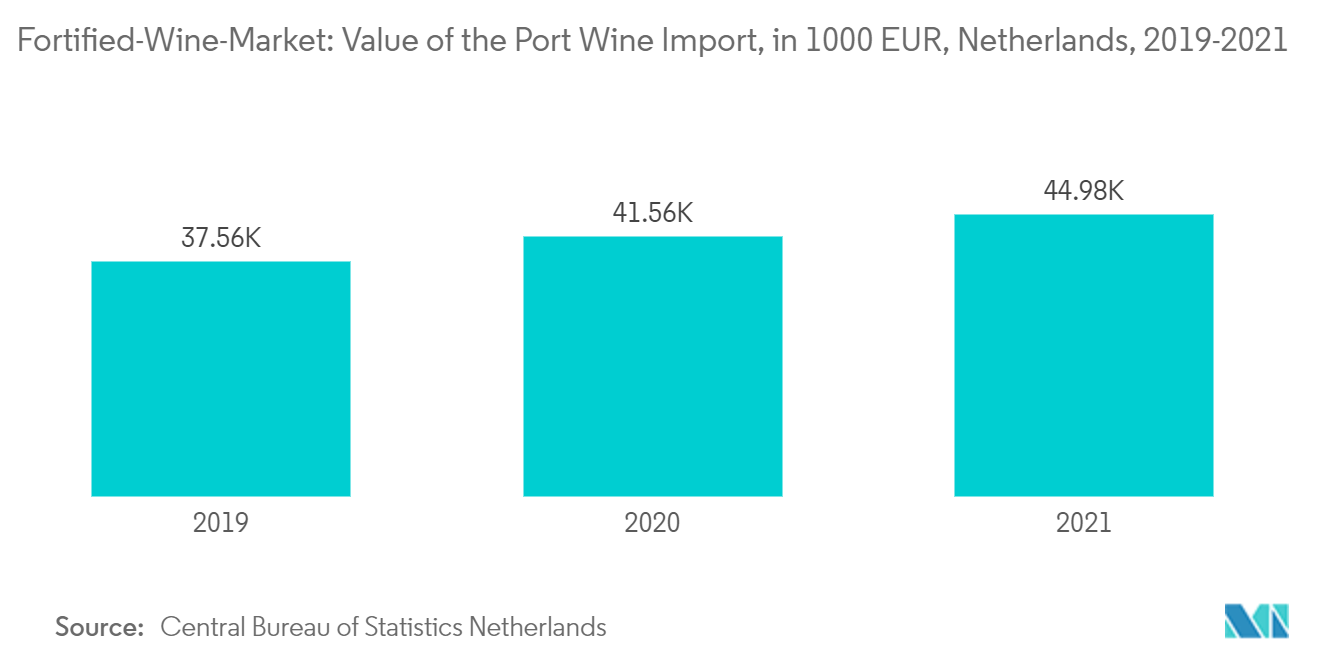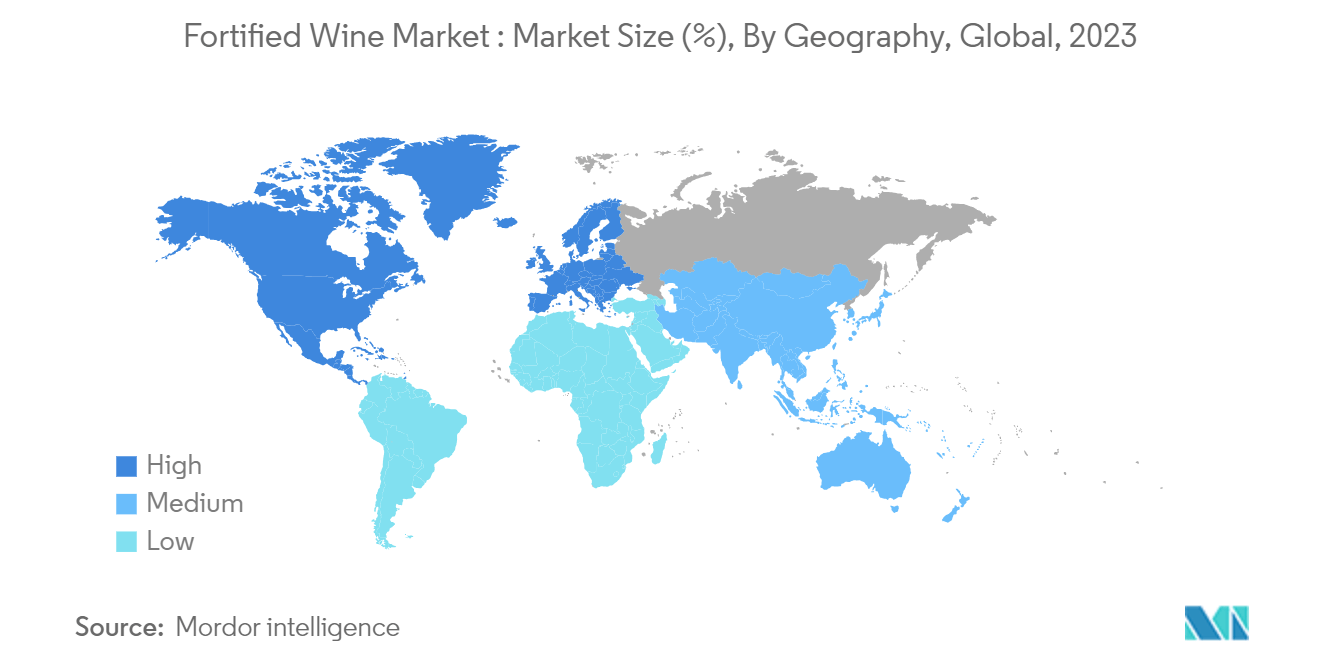Market Trends of Fortified Wine Industry
Port Wines Gained Popularity
- Port wine's popularity is increasing due to a global trend among young consumers toward premiumization. Port wines generally have an alcohol by volume (ABV) content ranging from 19% to 22%, whereas most table wines have an ABV of around 12% to 15%. This higher alcohol content sets port wines apart and contributes to their distinctively rich and sweet flavor profile. Beyond alcohol content, the quality of port wines is deeply influenced by cultivation practices, such as vineyard management, pruning, and harvesting methods. As consumer preferences pivot towards premiumization and a quest for unique, high-quality offerings, the global market for port wines is propelled forward.
- Also, health-conscious consumers are increasingly turning to port wine. With a heightened focus on moderation and responsible alcohol consumption, these consumers are drawn to port wine's rich antioxidant content, notably resveratrol, predominantly found in grape skins. Antioxidants, renowned for their health benefits, are pivotal in reducing inflammation and shielding against various diseases. Moreover, moderate consumption of wines, including port, has been linked to enhanced cardiovascular health. This is primarily due to the presence of polyphenols, which can aid in improving blood vessel function and lower "bad" cholesterol (LDL) levels. According to the Centers for Disease Control and Prevention reported that heart disease was the leading cause of death in the United States in 2021, accounting for 20% of all fatalities. Consequently, as concerns over heart health mount, consumers are increasingly drawn to port wine for its associated health advantages.

North America Holds the Largest Share
- Fortified wines are some of the fastest-growing varieties of alcoholic beverages in the US market, as they offer customers additional unique options and choices. The emergence of single-spirit bars has also prompted the growth of fortified wines in the country. The popularity of antique fortified wines, such as sherry and port, is particularly evident in such bars. Companies have earned brand recognition through aggressive branding campaigns and social media promotions. Moreover, cocktails often use fortified wines due to their unique flavors and higher alcohol content. They can add depth and complexity to a cocktail, sweetness, and body. Some popular fortified cocktail wines include vermouth, sherry, and port. In addition, fortified wines are being used more frequently in the foodservice industry. Chefs and mixologists are discovering new and creative ways to incorporate fortified wines into their dishes and drinks, using them to add flavor and balance to a wide range of dishes and cocktails.
- As a result, market players are taking note of the growing consumer demand for fortified wines and are launching new products to meet this demand. This trend is expected to continue as consumers become more interested in unique and sophisticated flavor profiles and as the food service industry continues experimenting with new ways to incorporate fortified wines into their menus. For instance, in September 2022, Glenfiddich launched Glenfiddich 12-Year-Old Sherry Cask Finish, a vibrant single malt matured in traditional American and European Oak casks before finishing in rare Amontillado Sherry casks for a distinctively rich and refined taste.


